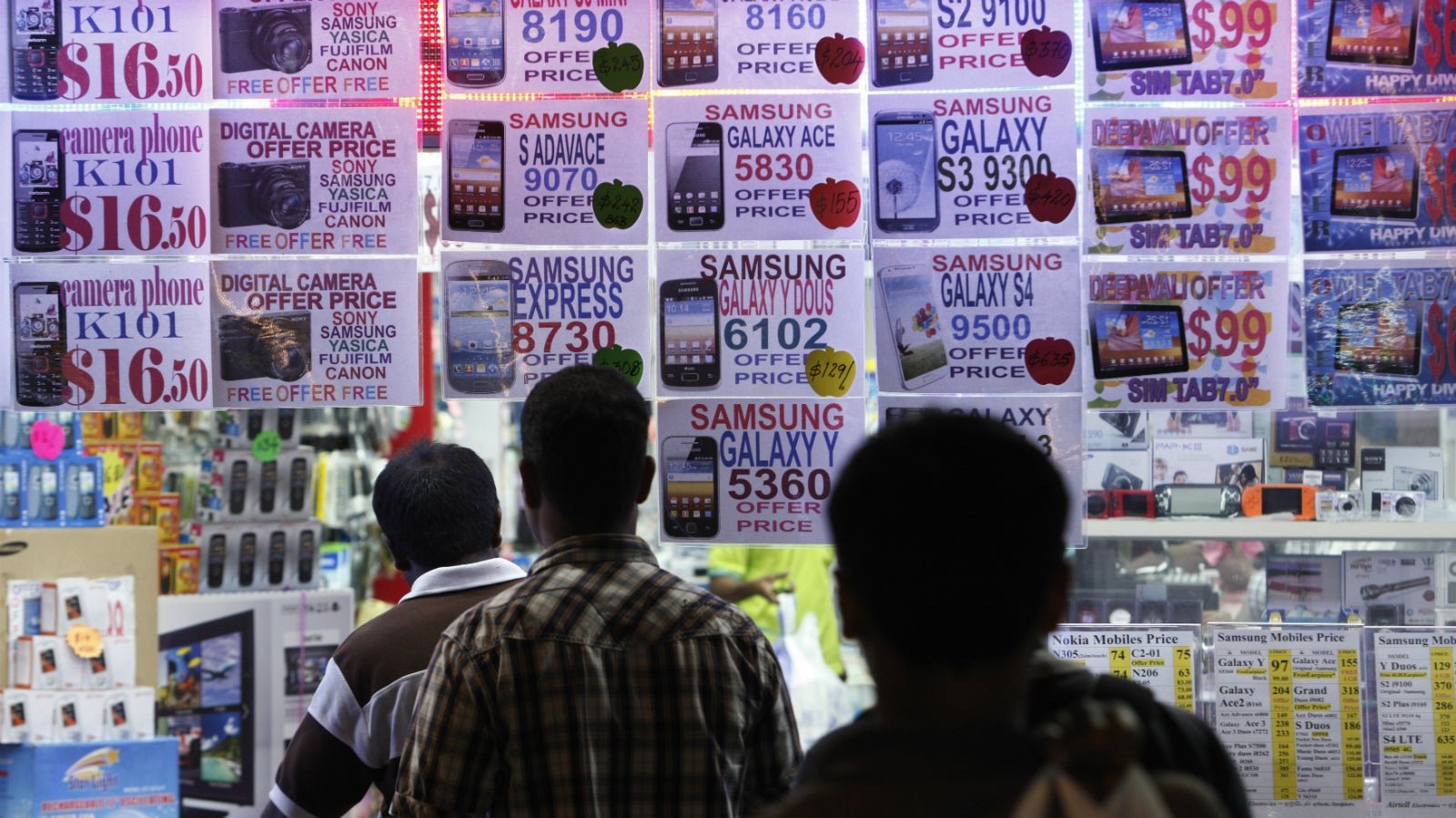Buying an Android phone in India is a pain in the ass
Every couple weeks or so, I get a text message from a friend who I shall refer to as Mr. Bhalla.


Every couple weeks or so, I get a text message from a friend who I shall refer to as Mr. Bhalla.
Mr. Bhalla, I kid you not, has been trying to buy an Android phone for over a year-and-a-half since someone snagged his HTC One on the Delhi Metro. Since then, he has been getting by with a crusty Moto G.
Here’s one of the messages: “What are your reservations about the LG G4?” Here’s another: “Mi 5 or OnePlus 3?” And another: “LeEco Le 2 is launching next week! What should I get? I’m so confused!”
I try to reply to Mr. Bhalla as often as I can to help him make up his mind about which phone to buy. But the truth is, I have no freaking clue. Each time I open my inbox, there’s yet another press release from yet another smartphone company that’s vying for a slice of India’s gigantic smartphone market, and trying to keep up with all this stuff is like trying to stay on a treadmill that goes faster and faster—eventually, you get flung off, and decide that you don’t care about exercising anymore.
According to a report from 91Mobiles, a Gurgaon-based portal that helps users research, compare, and buy phones, 90 brands launched 256 mobile phone models in India in the last three months alone. Not all them were smartphones—119 were feature phones—but that’s still a heck of a lot of models to choose from. I did a casual search on Flipkart and found that you can choose from 43,000 Android phones in pretty much any price range you want. I didn’t even dare search Amazon.
“We’re spoilt for choice, but when you’re an average consumer just trying to buy a phone, choice isn’t necessarily a good thing,” says Ketaki Bhojnagarwala, Associate Editor at 91Mobiles.
Mr. Bhalla, however, is not your average consumer. He’s an aspiring technology writer, which means he actually does keep up with this stuff. “I want my phone to be sheer perfection,” he says. “It’s like a job. You want one you’re totally satisfied with. You don’t want to keep changing it every year or so.”
Sheer perfection is a tag that more than a handful of phones released over the last year-and-a-half have earned. But none of them are good enough, says Mr. Bhalla.
The Galaxy S6? “Too much bloatware.”
The Galaxy S7? “Too much money.”
The Nexus 5X? “It only has a Snapdragon 810 processor (Editor’s note: it actually has a Snapdragon 808). The latest one is Snapdragon 820.”
“The Mi 5? “I wanted the Mi 5 Pro, but they didn’t launch that in India.”
Er, iPhone? “I hate Apple and their closed ecosystem. I’ll never buy Apple.”
In his 2004 book, The Paradox of Choice, psychologist Barry Schwartz writes that choice has two negative effects on people: instead of giving us freedom, it paralyses us by overwhelming us; and even if we do manage to overcome this paralysis and choose something, we end up less satisfied with what we choose. Could I have chosen better? That’s a question that we never stop asking ourselves.
It’s like going to Starbucks and having a 10-minute internal debate about whether you want—a short, tall, venti, or grande, caff or decaf, dairy or soy milk, with or without foam, syrup or no syrup. And then, when you’ve finally got your Mocha Frappuccino, wondering if you should have chosen the blended Java Chip Frappuccino (cream or no cream?) instead.
Even before Schwartz formulated his iconic theory, Steve Jobs, Apple’s late CEO, was living it. In 1997, when Jobs returned to Apple after having been fired from the company, he cut 70% of the products that Apple was working on. He shut down Apple’s printers business and killed the Newton, Apple’s infamous personal digital assistant. Instead, in one meeting, Jobs drew a matrix with four quadrants: the top two said “Pro” and “Consumer”. The bottom two said “Desktop” and “Laptop”.
Jobs’ minimalist approach to products carries through to this day, which is perhaps why it’s easier to choose an iPhone today than any Android phone in the market—all you have to worry about is which size you want it in: large, small, or extra-small. “You can put everything we make on this table between us today,” said Apple CEO Tim Cook in a 2015 interview with Charlie Rose.
I am not suggesting that Apple’s approach is the only approach—or even the right approach. After all, the freedom of choice is the only thing that drives competition and keeps prices in check. But frankly, when it comes to Android phones, we are entering ridiculous territory. Last week, Micromax, the maker of popular smartphones whose names escape me at the moment, launched 15 phones on one day. F.I.F.T.E.E.N.
“That’s crazy,” Mr. Bhalla says. “I think if you combine all those 15 models into one device, that would be my perfect smartphone.”
This post was first published by FactorDaily, which covers the intersection of technology and culture in India. We welcome your comments at [email protected].